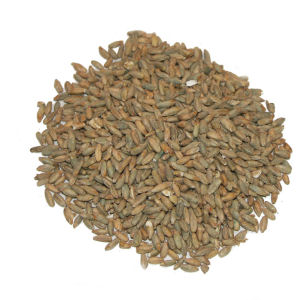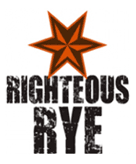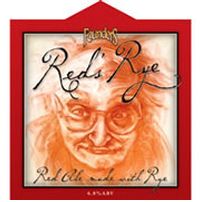Welcome back to our series of style guides, back after something of a hiatus. I’m going to take a look at some beers that aren’t exactly a style unto themselves, but have a major characteristic in common. Today on the NY Ale Project: Fruit beers.
First, let’s look at what we’re not talking about here. “Fruit beers” don’t refer to beers that have fruit taste, no matter how overwhelming, but don’t have any actual fruit additives. Dunkelweizens have a powerful banana taste and aroma, but as discussed in an earlier piece, those characteristics come from the yeast rather than from any actual banana. Same deal with IPAs, (most) Belgian strong pale ales, and other styles that may include easily-recognized fruit flavors. (Nor are we talking about Belgian or German wheat beers served with a slice of lemon or orange. I say hold the fruit, though I respect your right to drink it that way, in the same sense that I respect your right to wear socks with sandals.) Instead, this is a guide to beers made with actual fruit, fruit syrup, or some other fruit flavor additive.
Fruit beers vary widely in ingredients, base style (e.g. what the fruit is added to), and almost every other metric, but they all have the one obvious thing in common, so it makes some sense to speak of them as a style. Most beer geeks typically pass on the fruit beer. It’s not that it’s “girly” (any beer geek that I know would scoff at the entire concept of “manly” or “girly” beverages), it’s that the fruit often hides the beer taste. However, there are a few beers that get it right.
Raspberries are a fairly popular flavoring among fruit beer fans. Different brewers use different techniques to get their beer fruity. To make its 18% ABV Fort, Dogfish Head adds over a ton of pureed raspberries to the super-strong Belgian pale ale base. Fort, by the way, is one of the most alcoholic beers you’re likely to encounter on shelves with any frequency, and its high ABV is the exception rather than the rule for fruit beers. Most clock in at below 6% ABV.
New Glarus, a Wisconsin brewery only available in that state, makes a wonderful beer called Raspberry Tart. Instead of adding a puree to a base beer, NG actually ferments the raspberries themselves. It’s one of four American-made fruit beers with a grade higher than “B” and more than 100 reviews on Beer Advocate. Interestingly, the other three beers are also made by New Glarus, so obviously they’re doing something right with their fruit in Wisconsin. Raspberry Tart and Wisconsin Belgian Red, which is a very similar beer made with cherries instead of raspberries, are the only fruit beers with “A” scores.
What sets these beers apart from their American compatriots? While fruit beer may seem like a new gimmick, the Belgians have been making it for centuries, and the product is nothing like Sam Adams Cherry Wheat. In my yeast article, I talked about spontaneous fermentation in lambics, in which wort is left in open air and yeast is left to its own devices. Belgians have been blending fruit with these lambics for ages, and that’s the technique New Glarus is emulating with their Raspberry Tart and Wisconsin Belgian Red.
When the lambic is blended with fruit, it takes the fruit’s name. Framboise is raspberry and Kriek is cherry, which are the two most popular. You might also see Peche, or peach; and Cassis, or black currant. A few brewers, mostly American but some in Belgium, experiment with non-traditional fruits in their lambic like apricot , apple or banana. These fruit lambics are typically low on alcohol, as well as malt and hop characteristics, so the fruit can dominate the palate. However, traditional fruit lambics are not overly sweet. Certain brewers (you know who you are) add concentrated, sugary fruit syrup to the beer at bottling instead of fermenting the fruit with the wort. These beers are fine, if you like really sweet camp-style fruit punch instead of beer.
New York Ale Project’s Favorite Fruit Beer(s): At this point, it seems only fair to name two beers, one lambic-style and one not. Also, I’m going to exclude New Glarus, even though it might win both categories, since you can only get it in Wisconsin. For the non-lambic fruit beer, my crown goes to Black & Blue by Dogfish Head, which is a strong ale made with pureed blackberries and blueberries. Naturally, given the brewery involved, it’s a powerful and strong beer, and those berries give a mighty kick. But when you’re in a big beer mood, and you want something a little different, you could do worse.
Lambic is a more difficult category, since there are some excellent beers to choose from and I haven’t even come close to sampling a majority, even of those available in NYC. But for me, it’s got to be Saint Lamvinus by Cantillon in Brussels. It’s a delicious, insanely complex brew made with merlot and cabernet grapes. You can find it occasionally in the city, though it’s pricey, but well worth it for a special occasion.













